Farm Scoop – August
Microscope Workshop for Farmers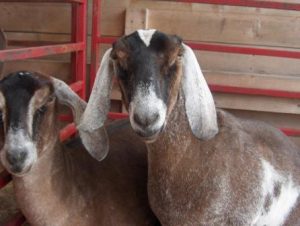
Common internal parasites of sheep, goats, and camelids can be detected using fecal flotation methods. Equip yourself with microscopy skills that improve your ability to make sound management decisions.
Where: J. Franklin Witter Center, 160 University Farm Road, Old Town, Maine
When: Saturday August 9th, 2014. 10:00 a.m. – 1:00 p.m.
Workshop fee: $30 per person
Instructors: Jim Weber DVM PhD and Anne Lichtenwalner DVM PhD
For more information and to register.
 Healthy Soils Webinar Series: Managing for Soil Health on an
Healthy Soils Webinar Series: Managing for Soil Health on an
Organic Farm — A Farmer’s Perspective
Presenter: Klaas Martens, Lakeview Organic Grain,
Penn Yan, New York
When: August 12, 2014, 2:00 p.m. Eastern / 11:00 a.m. Pacific
60 Minutes
Our presenter, Klaas Martens, Penn Yan, NY, uses a diverse crop rotation to farm over 1,400 acres of organic corn, soybeans, small grains, a variety of peas, and cover crops. By adhering to one simple principle – every crop follows a suitable predecessor – Martens has improved soil health and function to cycle nutrients, increase water infiltration and availability, and eliminate both weed and disease pest problems. In this presentation, Martens will focus on the use of plants to change the soil and how soil biology can perform the services that are expected from tillage. He will also cover relay cropping, or starting one crop before the previous crop is harvested, and how this practice allows him to maintain a living root and cover on the soil all year. Can tillage be part of a soil health building system? For more information on the webinar, and how join, click here.
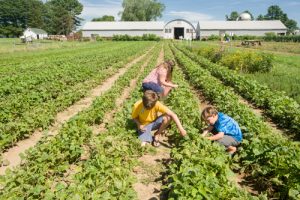 Gubernatorial Forum on Agriculture
Gubernatorial Forum on Agriculture
When: Tuesday, August 26th starting at 1:00 p.m.
Where: The Sportsman’s Alliance of Maine, 205 Church Hill Road, Augusta, Maine
The Agricultural Council of Maine (AgCOM) is sponsoring a gubernatorial forum on Tuesday, August 26th starting at 1:00 p.m. The focus of the event will be on Maine agriculture. The candidates will be speaking at different times and this event will not be a debate. Eliot Cutler will speak at 1:00 p.m., Governor LePage has agreed to participate at 2:00 p.m. and Congressman Mike Michaud at 3:00 p.m. at the Sportsman’s Alliance of Maine.
John Rebar, Director of Extension, will be serving as moderator. While Cooperative Extension doesn’t take a political position regarding the candidates, we do encourage that everyone participate in our democratic process. The University of Maine wants to support a vibrant agricultural economy that is sustainable and prosperous.
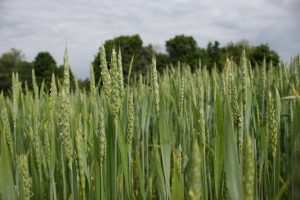 Cover Crops – Selecting & Sowing
Cover Crops – Selecting & Sowing
Cover crops provide many benefits to the soil and next year’s crops. August and September are the months in when most cover crops are sown in Maine. Here is a link to a listing of cover crops for Maine.
Here is a link to a comprehensive guide to cover crops from NRCS.
Refining & Improving Your Product Sales
- The Art & Science of Farmers’ Market Displays (PDF)
- By listening and questioning your customer, you will be able to provide the products and services they want. This link to a series from Penn State University Extension explores ways to better know your customer.
- Learn more about using social media to market your products.
- Here is a link to several webinars for farmers about social media and mobile technology.
The Forestry Rules of Maine 2014
Questions about how to manage your woodlot? Download this new guide for free.
What’s in the 2014 Farm Bill for Farm Service Agency Customers?
The Agricultural Act of 2014 (the Act), also known as the 2014 Farm Bill, was signed by President Obama on Feb. 7, 2014. The Act repeals certain programs, continues some programs with modifications, and authorizes several new programs administered by the Farm Service Agency (FSA). Most of these programs are authorized and funded through 2018.
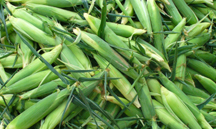 Scaling up Your Vegetable Farm
Scaling up Your Vegetable Farm
A new publication from the National Sustainable Agriculture Information Service helps farmers decide if they are ready to expand their operations to serve wholesale markets or produce more for direct markets. It describes how organization and planning can help a producer meet the challenges involved in scaling up. This publication addresses important considerations such as land, labor, food safety, marketing, and insurance. Find it for free online.
USDA Provides 12-Week Progress Update on Disaster Assistance
106,000 Payments Helping Farmers in 40 States Recover from Losses.
Agriculture Secretary Tom Vilsack provided a 12-week progress report on U.S. Department of Agriculture (USDA) disaster assistance programs today, announcing that USDA has processed 106,000 payments to farmers in 40 states across the country who suffered livestock and grazing losses between October 2011 and passage of the 2014 Farm Bill.
“Farmers and ranchers who waited two and a half years for a Farm Bill are now getting some relief,” said Vilsack. “We met the very ambitious goal to get these programs up and running in just 60 days. Now, thanks to our dedicated staff in offices across the country, we’ve provided more than 106,000 payments to farmers and ranchers in 40 states who suffered drought, blizzard, and other weather-related losses.”
A quick implementation of the disaster assistance programs has been a top priority for USDA. In February, the Farm Service Agency (FSA) announced that enrollment for four disaster assistance programs would begin April 15, 2014, 60 days from the date the programs were reestablished by the 2014 Farm Bill. After the 2008 Farm Bill, it took over one year for the programs to get up and running.
Since then, dedicated full-time FSA staff, as well as temporary employees hired to expedite the application process, have processed over $1.2 billion in payments to qualifying farmers and ranchers. The first payments were sent out to farmers and ranchers within two weeks of enrollment. USDA estimated that roughly $2.5 billion would be provided in disaster relief to cover losses from October 2011 through September 2014. If those estimates prove accurate, it would mean nearly half of all disaster payments have already been provided.
While disaster relief is a critical lifeline that can prevent farmers and ranchers who do not have access to crop insurance from being wiped out by weather-related losses beyond their control, most producers only receive support equal to 60 percent of their actual losses.
USDA disaster programs include:
- The Livestock Forage Disaster Program (LFP) and the Livestock Indemnity Program (LIP) provides payments for grazing losses due to drought and livestock deaths due to adverse weather.
- The Emergency Assistance for Livestock, Honeybees, and Farm-Raised Fish Program (ELAP) provides assistance for livestock, honeybees and farm-raised fish losses due to disease (including cattle tick fever), weather, wildfires and colony collapse disorder, or for losses not covered under other disaster assistance programs established by the 2014 Farm Bill.
- The Tree Assistance Program (TAP) provides financial assistance to eligible orchardists and nursery tree growers to replant or rehabilitate trees, bushes and vines that were lost or damaged by natural disasters.
Specific program deadlines are as follows:
- 2011-2013 ELAP – Friday, Aug. 1, 2014
- 2011 -2014 LFP – Friday, Jan. 30, 2015
- 2011-2014 LIP – Friday, Jan. 30, 2015
- 2011-2014 TAP – Monday, Feb. 2, 2015
Producers affected by adverse weather should contact their FSA county office to make an appointment and learn if they are eligible for disaster assistance. For more information, producers may review the 2014 Farm Bill Fact Sheet, and the LIP, LFP, ELAP and TAP fact sheets online, or visit any local FSA office.
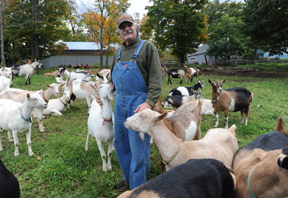 Scrapie Information for Goat and Sheep Producers
Scrapie Information for Goat and Sheep Producers
As a producer of sheep or goats, you ought to be aware of the latest information about scrapie. The Scrapie Eradication Program has been fairly successful to date, however, there are still steps to be taken so that the disease might be completely eradicated from the US. In an effort to keep you posted and with the support of the American Sheep Industry, Dick Brzozowski, Extension Educator assembled a file of information for sheep and goat producers. To get the complete file, contact Lynne Hazelton at 1.800.287-.1471.
In addition, below are 3 links to more scrapie-related information.
- USDA Scrapie webpage. On this page there is a link to the NIAA’s Eradicate Scrapie website — there are free educational materials to order at this site.
- Voluntary Scrapie Free Flock Certification Program (SFCP). (This is the component of the National Scrapie Eradication Program that has changed; all mandatory requirements remain the same.)
- Information on ordering ear tags.
Country of Origin Labeling — The Basics
When: Thursday, September 25, 2014, 2:00 p.m. – 3:00 p.m. Eastern Time
Join USDA’s Agricultural Marketing Service (AMS) for a live and interactive webinar, “Country of Origin Labeling—The Basics.”
Country of Origin Labeling (COOL) is a labeling law that requires retailers to provide their customers with information about the origin of various food products. This includes fruits, vegetables, nuts, fish, shellfish, beef, veal, pork, lamb, goat, and chicken. Mandatory COOL requirements help consumers make informed decisions about the food they buy.
AMS implements, administers, and enforces the COOL regulations. Since the regulations were finalized in 2009, AMS and our state partners have closely monitored industry compliance with COOL through reviews of more than 25,000 retail stores and audits of nearly 2,000 suppliers.
During the webinar, Julie Henderson, Director of AMS’ COOL Division, will introduce COOL and discuss what we’ve found through our monitoring activities. Her formal presentation will be followed by interactive question and answer session.
This webinar is free and available to anyone with Internet access. However, space is limited and you must register to participate. Register today for our webinar!
To learn more about COOL visit www.ams.usda.gov/COOL.
This webinar is hosted by the USDA’s Agricultural Marketing Service (AMS).
If you have any questions about our webinar series or USDA’s Agricultural Marketing Service, please contact Christopher Purdy at 202.720.3209.
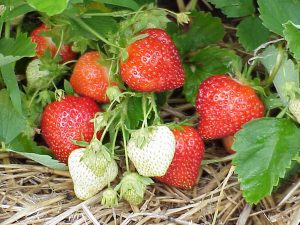 Disaster Assistance for 2012 Frost or Freeze Fruit Crop Losses Announced
Disaster Assistance for 2012 Frost or Freeze Fruit Crop Losses Announced
Enrollment Begins July 22
WASHINGTON, July 21, 2014 – The U.S. Department of Agriculture (USDA) today announced Noninsured Crop Disaster Assistance Program (NAP) assistance for losses to bush or tree fruit crops due to frost or freeze during the 2012 crop year. The program, authorized by the 2014 Farm Bill, provides supplemental NAP payments to eligible producers.
Farmers who did not have access to crop insurance and are in primary and adjacent counties that received a Secretarial disaster designation because of frost or freeze in 2012 are eligible for NAP assistance. Losses due to weather damage or other adverse natural occurrences may also qualify for program assistance.
NAP enrollment begins July 22, 2014. Applications must be submitted to FSA county offices by Sept. 22, 2014.
“After the 2014 Farm Bill was enacted into law, USDA expedited the restart of disaster assistance programs as a top priority,” said FSA Administrator Juan Garcia. “Fruit producers experienced significant financial losses from weather-related damage in 2012. NAP provides them with long-awaited disaster relief.”
To expedite applications, producers who experienced losses are encouraged to collect records documenting these losses in preparation for the sign-up in this program. Producers also are encouraged to contact their FSA county office to schedule an appointment. Limited resource, socially disadvantaged, and beginning producers are eligible for premium reductions and also may be eligible for fee reductions.
Interested producers can view the 2012 NAP Coverage for Frost, Freeze or Weather Related Fruit Losses Fact Sheet, or visit a local FSA office. To find out if land is located in an eligible frost/freeze county.
Nomination Deadline Nears for Farm Service Agency County Committees
WASHINGTON, July 17, 2014 — U. S. Department of Agriculture (USDA) Farm Service Agency (FSA) Administrator Juan Garcia reminds farmers, ranchers and other agricultural producers that Aug. 1, 2014, is the deadline for local FSA county committee nominations.
County committees are an important link between the farm community and the U.S. Department of Agriculture. Farmers and ranchers elected to local committees share their opinions and ideas on federal farm programs.
“There’s still time for eligible farmers and ranchers to get involved in this year’s county committee elections,” said Garcia. “Nominate yourself or a candidate of your choice to serve on the local county committee. I especially encourage the nomination of beginning farmers and ranchers, as well as women and minorities. This is your opportunity to have a say in how federal programs are delivered in your county.”
While FSA county committees do not approve or deny farm ownership or operating loans, they work closely with county executive directors and make decisions on disaster and conservation programs, emergency programs, commodity price support loan programs and other agricultural issues.
Members serve three-year terms. Nationwide, there are about 7,800 farmers and ranchers serving on FSA county committees. Committees consist of three to 11 members that are elected by eligible producers.
To be eligible to serve on an FSA county committee, a person must participate or cooperate in a program administered by FSA, be eligible to vote in a county committee election and reside in the local administrative area where the person is nominated.
To become a candidate, an eligible individual must sign the nomination form, FSA-669A. The form and other information about FSA county committee elections are available at www.fsa.usda.gov/elections. Forms for the 2014 election must be postmarked or received in the local USDA Service Center by close of business on Aug. 1, 2014. Ballots will be mailed to eligible voters by Nov. 3 and are due back to the local USDA Service Centers on Dec. 1. The newly elected county committee members will take office on Jan. 1, 2015.
